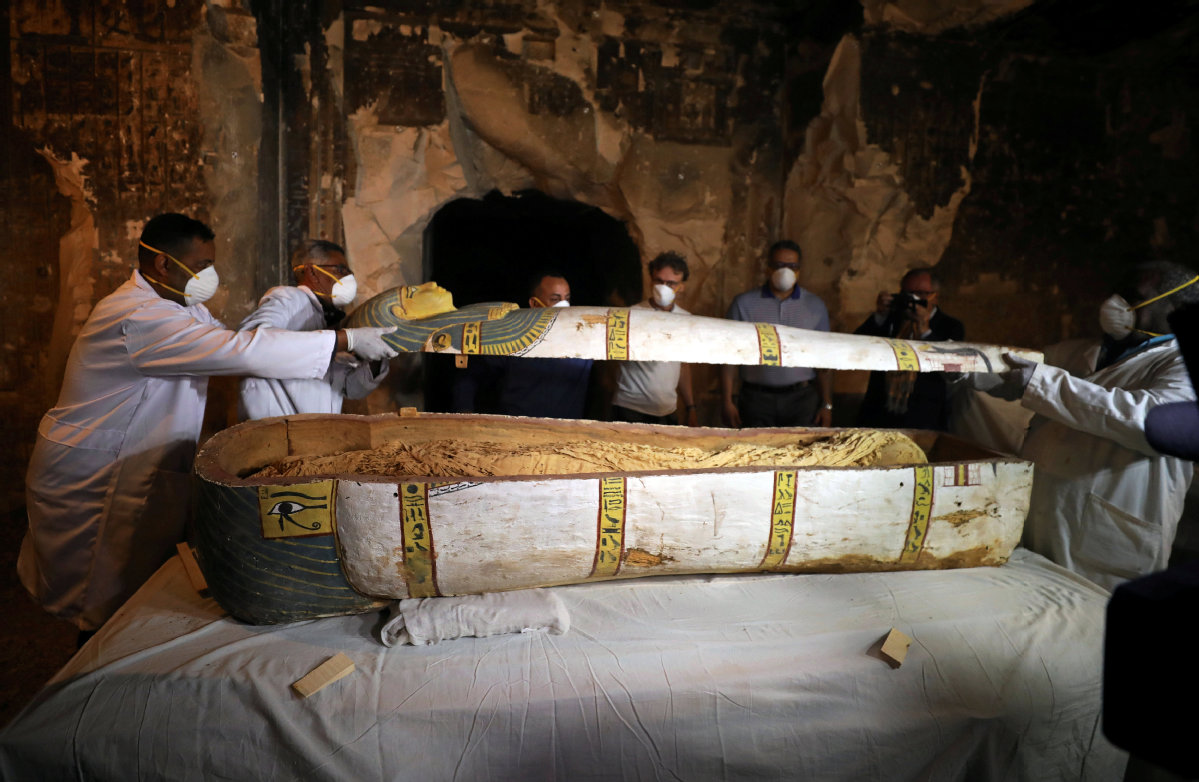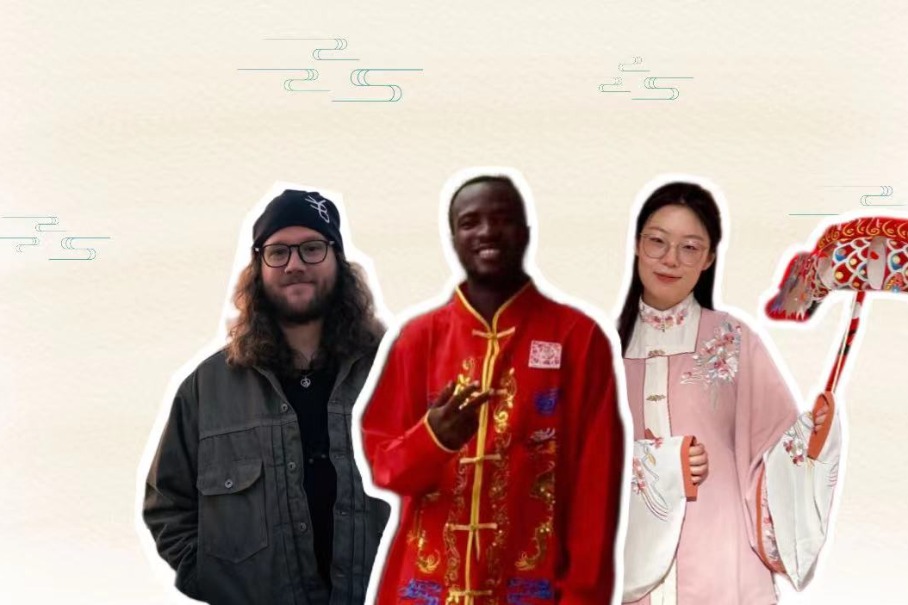Egypt unveils woman's Pharaonic tomb
China Daily | Updated: 2018-11-26 08:55

LUXOR, Egypt-Authorities on Saturday unveiled a well-preserved mummy of a woman inside a previously unopened coffin in Luxor in southern Egypt dating back more than 3,000 years.
The sarcophagus, an ancient coffin, was one of two found earlier this month by a French-led mission in the northern area of El-Asasef, a necropolis on the western bank of the Nile. The first one had been opened earlier and examined by Egyptian antiquities officials.
In a ceremony in front of the temple of Queen Hatshepsut, Antiquities Minister Khaled al-Anani announced that French and Egyptian archaeologists had discovered "a new tomb... with very nice paintings".
Located between the royal tombs at the Valley of the Queens and the Valley of the Kings, the El-Asasef necropolis is the burial site of nobles and senior officials.
Among the finds in the tomb are sarcophagi, statues and about 1,000 funerary figurines called "Ushabtis" made of wood, faience and clay.
"One sarcophagus was rishi-style, which dates back to the 17th dynasty, while the other sarcophagus was from the 18th dynasty," Anani said. "The two tombs were present with their mummies inside."
The 18th Dynasty dates back to the 13th century BC, a period noted for some of the most well known Pharaohs, including Tutankhamen and Ramses II.
It was the first known time that authorities had opened a previously unopened sarcophagus before international media.
Ongoing work
In a statement, the ministry said the remains are of a woman named Thuya.
But spokeswoman Nevine Aref said later that work was still ongoing to definitively identify the name of the mummy.
Earlier in the day, authorities also revealed in the same area the tomb of the overseer of the mummification shrine identified as Thaw-Irkhet-if.
Three hundred meters of rubble were removed over five months to uncover the tomb, which contained colored ceiling paintings depicting the owner and his family.
The tomb, which also contains mummies, skeletons and skulls, dates back to the middle-kingdom almost 4,000 years ago, but was reused during the late period.
Ancient Egyptians mummified humans to preserve their bodies for the afterlife, while animal mummies were used as religious offerings.
Egypt has revealed over a dozen ancient discoveries since the beginning of this year and archaeological sites, particularly in Luxor, make the country a major draw for foreign tourists.
REUTERS - AFP























